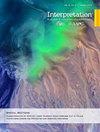Midland盆地高效水平井特性研究
IF 1.1
4区 地球科学
Q3 GEOCHEMISTRY & GEOPHYSICS
Interpretation-A Journal of Subsurface Characterization
Pub Date : 2023-06-28
DOI:10.1190/int-2022-0105.1
引用次数: 0
摘要
Midland Basin Spraberry和Wolfcamp致密油区块中最好的水平井有什么共同点?它们与产量较低的油井有什么区别?在这项研究中,我们用高分辨率地质模型收集的数据以及公共和供应商来源的完井数据来解决这些问题。从10064口致密油水平井中,选择了101口(1%)第一年产量最高的井和101口长度归一化第一年产量最高产的井。我们比较了产量最高的油井和其他油井的完井、间距、岩石物理、着陆和流体特性。在这些发现中,我们发现Wolfcamp A井更有可能位于顶部1%,尤其是在碳酸盐岩贫乏的岩石中钻探的井。平均充烃孔隙体积和油形成因素仍然导致高性能井。高压是Wolfcamp B顶级制作人的一个重要考虑因素。所有最好的石油生产商都有较低的天然气-石油产量比率。顶部1%的井通常是井场中第一口要完成的井,它们来自高于平均水平的井场。前30%的完井导致前1%的井比极端密集的完井更频繁。运营商可以将这些结果应用于米德兰盆地的进一步开发。具体而言,他们可以优先考虑Wolfcamp A中碳酸盐丰度较低的开发区域,并通过不进行极密集的完井来节省成本。本文章由计算机程序翻译,如有差异,请以英文原文为准。
Properties of High-Performing Horizontal Wells in the Midland Basin
What do the best horizontal wells in the Midland Basin Spraberry and Wolfcamp tight oil plays have in common? What differentiates them from less productive wells? In this study, we address these questions with data assembled from a high-resolution geomodel and public and vendor-sourced completions data. From 10,064 tight oil horizontal wells, 101 (1%) of the most productive wells by first-year oil production and 101 of the most productive wells by length-normalized first-year production are selected. We compare the completion, spacing, and petrophysical, landing, and fluid properties between the most productive wells and others. Among the discoveries, we find that Wolfcamp A wells are more likely to be in the top 1%, especially those drilled in the carbonate-poor rock. Average hydrocarbon-filled pore volume and oil formation factors still led to high-performing wells. High pressure is an important consideration for Wolfcamp B top producers. All of the best oil producers have low producing gas-oil ratios. The top 1% of wells are usually the first well in the pad to be completed, and they come from above-average pads. The top 30% of completions led to the top 1% of wells more often than extremely intense completions. Operators can apply these results to the further development of the Midland Basin. Specifically, they can prioritize development areas in Wolfcamp A with low carbonate abundance and save costs by not implementing extremely intense completions.
求助全文
通过发布文献求助,成功后即可免费获取论文全文。
去求助
来源期刊

Interpretation-A Journal of Subsurface Characterization
GEOCHEMISTRY & GEOPHYSICS-
CiteScore
2.50
自引率
8.30%
发文量
126
期刊介绍:
***Jointly published by the American Association of Petroleum Geologists (AAPG) and the Society of Exploration Geophysicists (SEG)***
Interpretation is a new, peer-reviewed journal for advancing the practice of subsurface interpretation.
 求助内容:
求助内容: 应助结果提醒方式:
应助结果提醒方式:


